The Wondrous Arab Asian Countries
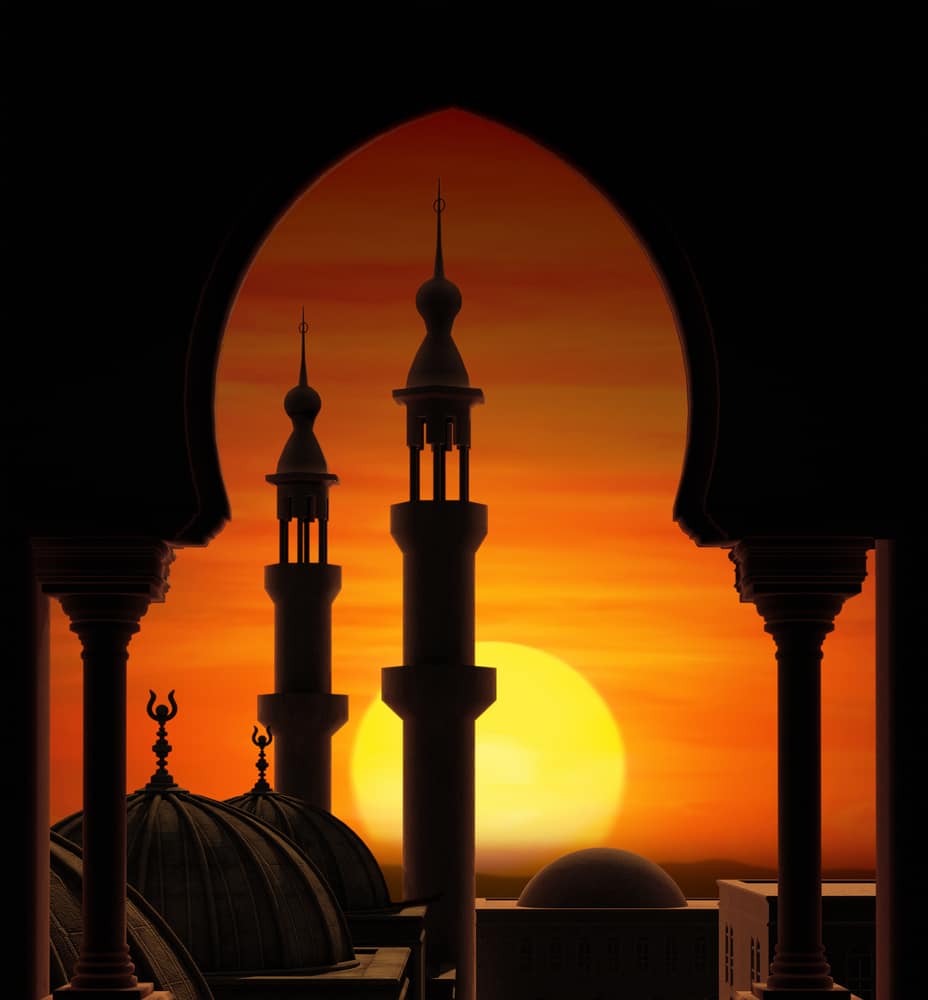
Updated On: April 22, 2024 by Aya Radwan
Have you ever heard about Arabian nights? You know when you’re in the middle of the desert, sitting comfortably in a tent beneath the stars. You’re surrounded by your friends or sometimes complete strangers under the star-studded blanket that is the sky. These magical nights and safaris are some of the enchanting destinations these Arab Asian Countries can offer you.
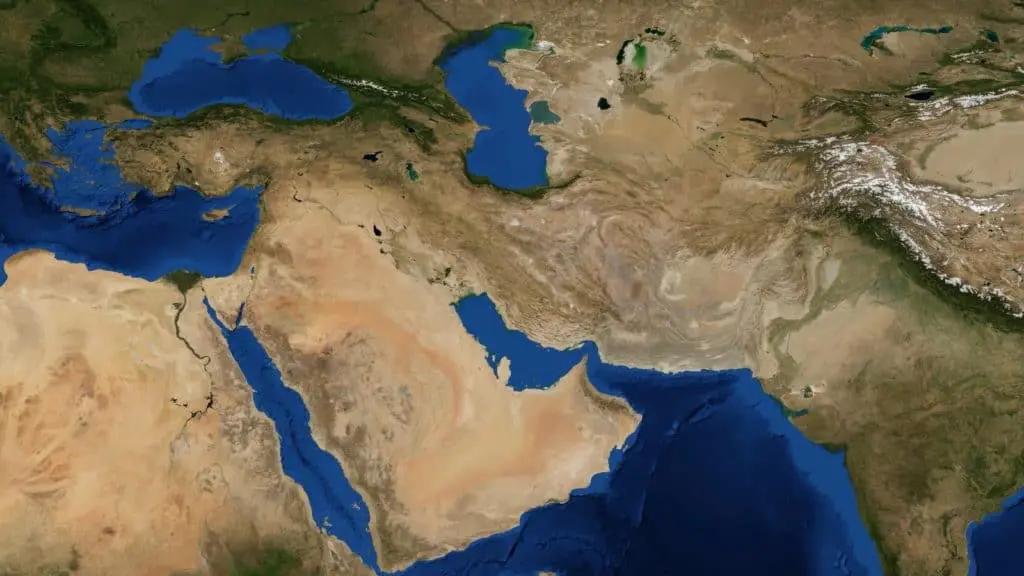
The Arab Asian countries are considered a part of the greater Middle East! Since the entire region of the Middle East comprises several other regions. These are the Arabian Peninsula, the Levant, the Sinai Peninsula, the Island of Cyprus, Mesopotamia, Anatolia, Iran and Transcaucasia. In this article, we’re concentrating on Arab Asian countries.
There are 13 Arab Asian Countries in the Western Asia region. Seven of these countries are located in the Arabian Peninsula; Bahrain, Kuwait, Oman, Qatar, United Arab Emirates, Saudi Arabia and Yemen. The remaining Arab Asian countries are Iraq, Jordan, Lebanon and Syria.
Bahrain
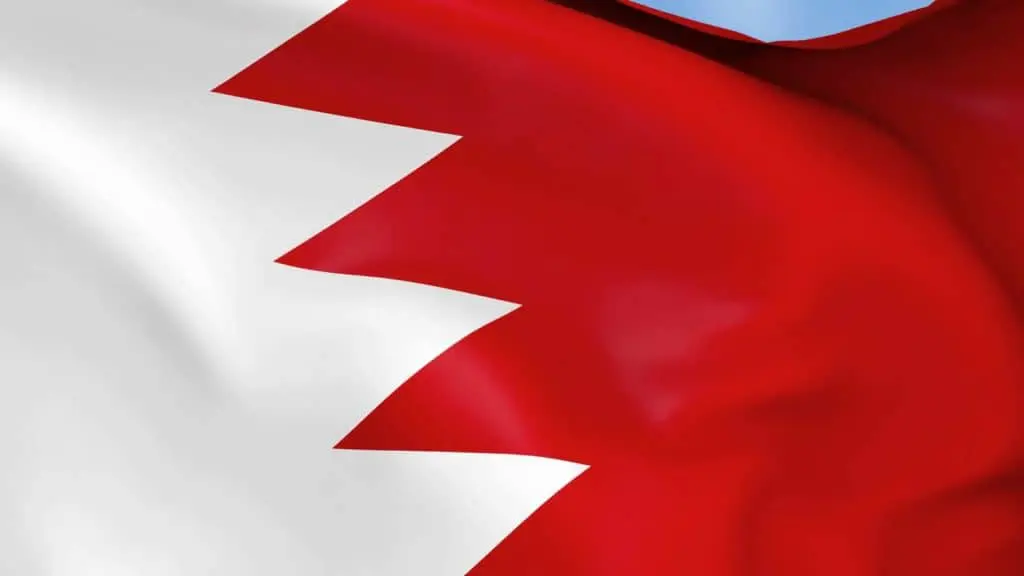
Officially known as the Kingdom of Bahrain, this country is the third smallest country in Arab Asian countries. Bahrain has been famous since Antiquity for the pearly beauties that were considered the best in the 19th century. The ancient Dilmun Civilization is said to have been centred in Bahrain.
Located in the Persian Gulf, Bahrain is an island nation that consists of an archipelago that consists of 83 islands, 50 of them are natural islands while the remaining 33 are artificial islands. The island is located between the Qatari Peninsula and the northeastern coast of Saudi Arabia. The largest city in Bahrain is Manama which is also the capital of the kingdom.
Bahrain is surprisingly full of tourist attractions and is gradually gaining world recognition for the treasures it holds. A combination of modern Arab culture and architectural and archaeological legacy of more than 5,000 years awaits you when you visit. Some of the popular tourist activities in the country are bird watching, scuba diving and horse riding mainly in the Hawar Islands.
What Not to Miss in Bahrain
1. Qalat Al-Bahrain (Bahrain Fort):
This fort is also known as the Portuguese Fort and is a UNESCO World Heritage Site since 2005. The fort and the mound it was built on are located on Bahrain island on the northern seashore. The first excavations on the site were made in the 1950s and 1960s.
Archaeological findings on site revealed that the fort contained traces of urban structures relating to seven civilizations beginning with the Dilmun Empire. It is believed the site has been occupied for about 5,000 years and the present fort dates back to the 6th century AD. The artificial tell – mound – the fort was built on is an accumulation of human occupation.
Structures found at the tell vary between residential, public, commercial, religious and military. There’s also the famous Qalat Al-Burtughal (The Portuguese Fort), several walls and necropolises, and ruins from the Copper Age. Excavations of the Palace of Uperi revealed snake bowls in addition to sarcophagi, seals, and a mirror among other things.
2. Arad Fort:
Arad Fort was built in the traditional Islamic fort style in the 15th century, it isn’t clear when exactly it was built and studies to solve this mystery are still underway. The fort is square-shaped with a cylindrical tower on every corner. There’s a trench surrounding the fort that was filled with water from wells specially dug for that purpose.
The fort was recently restored between 1984 and 1987 with the exclusive use of traditional materials that were unveiled after studying samples from the fort. Materials such as coral stone, lime and tree trunks were used in the restoration process and no cement or other materials were used so as not to reduce the fort’s historical value.
Arad Fort is close to the Bahrain International Airport and is illuminated at night. Due to its strategic location, it was used as a defence fort from the time of the Portuguese invasion in the 16th century up to the reign of Shaikh Salman Bin Ahmed Al-Khalifa in the 19th century. The fort is open from 7:00 am to 2:00 pm for I BD (2.34 Euros).
3. Barbar Temple:
Barbar Temple refers to a set of three temples that were discovered on an archaeological site in the village of Barbar in Bahrain. The three temples are built atop one another. The oldest of the three temples dates back to 3,000 BC while the second is believed to have been built some 500 years later and the third between 2,100 BC and 2,000 BC.
It is believed the temples were part of the Dilmun culture and they were built to worship the ancient god Enki; the god of wisdom and freshwater and his wife Nankhur Sak (Ninhursag). Excavation works on the site revealed tools, weapons, pottery and small pieces of gold which are now on display in the Bahrain National Museum. The most significant find is the copper head of a bull.
4. Riffa Fort:
This magnificently restored fort gives a wonderful view over the Hunanaiya valley. It was built during the reign of Sheikh Salman bin Ahmed Al-Fateh Al-Khalifa in 1812 and it was inherited by his grandchildren. Sheikh Isa bin Ali Al-Khalifa; ruler of Bahrain from 1869 to 1932 was born in this fort. Riffa had been the seat of government until 1869 and it was officially open for visitors in 1993.
5. Al-Fateh Grand Mosque:
One of the largest mosques in the world, Al-Fateh Grand Mosque was built in 1987 by Sheikh Isa bin Salman Al-Khalifa in the suburban neighbourhood of Juffair in Manama. The mosque was named after Ahmed Al-Fateh and it became the site of the National Library of Bahrain in 2006. The mosque’s huge dome is the world’s largest fibreglass dome with a weight of over 60 tonnes
The Library of Ahmed Al-Fateh Islamic Center is home to about 7,000 books, come of which are over a-100-years old. There are copies of the books of Hadith; the teachings of Prophet Muhammad, the Global Arabic Encyclopedia and the Encyclopedia of Islamic Jurisprudence. The mosque is a major tourist attraction and tours are offered in several languages including English and Russian. It is open for visitors from 9:00 am to 4:00 pm on all Fridays.
6. Al-Areen Wildlife Park:
Al-Areen is a nature reserve and zoo in the desert area of Sakhir and is one of five other protected areas in the country. The park was established in 1976 and is home to species from Africa and south Asia in addition to species of plants and animals that are native to Bahrain. The park features 100,000 planted flora and trees, more than 45 species of animals, 82 species of birds and 25 species of flora.
The park is adjacent to Bahrain International Circuit and is open to visitors only via bus tours that are booked at the entrance. Al-Areen is only a 40-minute drive from the capital Manama.
7. Tree of Life:
This tree located on a hill in a barren area of the Arabian Desert is over 400 years old. The Tree; Prosopis cineraria, was named the Tree of Life for the mystical source of its survival. Some say the tree has learned how to extract water from the sand grains, while others say that its 50-meters deep roots can reach underground water. A more mystical explanation is that the tree stands on the former location of the Garden of Eden, hence its magical source of water.
The tree is abundantly covered in green leaves and is a popular tourist attraction. The resin from the tree is used to make candles, aromatics and gum while the beans are processed into meal, jam and wine. The tree is only 40 meters away from the capital Manama.
8. Bahrain National Museum:
Opened in 1988, Bahrain National Museum is the oldest and largest museum in the country and is the most popular tourist attraction. Collections housed in the museum cover about 5,000 years of the history of Bahrain. Showcased in the museum is a collection of Bahrain’s ancient archaeological artefacts acquired since 1988.
The museum consists of 6 halls, of which 3 are devoted to the archaeology and civilization of the Dilmun. Two halls depict and show the culture and lifestyle of the people of Bahrain’s pre-industrial past. The last hall; added in 1993 is dedicated to Natural History which focuses on the natural environment of Bahrain. The museum is situated in the capital Manama, adjacent to the Bahrain National Theater.
9. Beit Al-Quran (House of Quran):
This complex in Hoora is dedicated to Islamic Arts and was established in 1990. The complex is most famous for its Islamic Museum which was acknowledged as being one of the most renowned Islamic museums in the world. The complex comprises of a mosque, a library, an auditorium, a madrassa and a museum of ten exhibition halls.
The library has over 50,000 books and manuscripts in Arabic, English and French and is available for public use during working days and hours. The museum’s halls display rare Quranic manuscripts from different periods and countries. Such as manuscripts on parchments from Saudi Arabia Mecca and Medina, Damascus and Baghdad.
Beit Al-Quran is open to the public from Saturdays to Wednesdays from 9:00 to 12:00 pm and from 4:00 pm to 6:00 pm respectively.
10. Al-Dar Island:
This island that is 12 kilometres southeast of the capital Manama is the perfect gateway to everyday life. It offers the cleanest sand and sea on all shores of Bahrain which are ideal for all sorts of adventurous activities such as snorkelling, jetski, sightseeing and scuba diving. The Al-Dar resort is only a ten-minute offshore trip from the dhow harbour Sitra fishermen’s port. There’s a variety of hut accommodations with BBQ areas and the huts are well furnished and equipped.
Kuwait
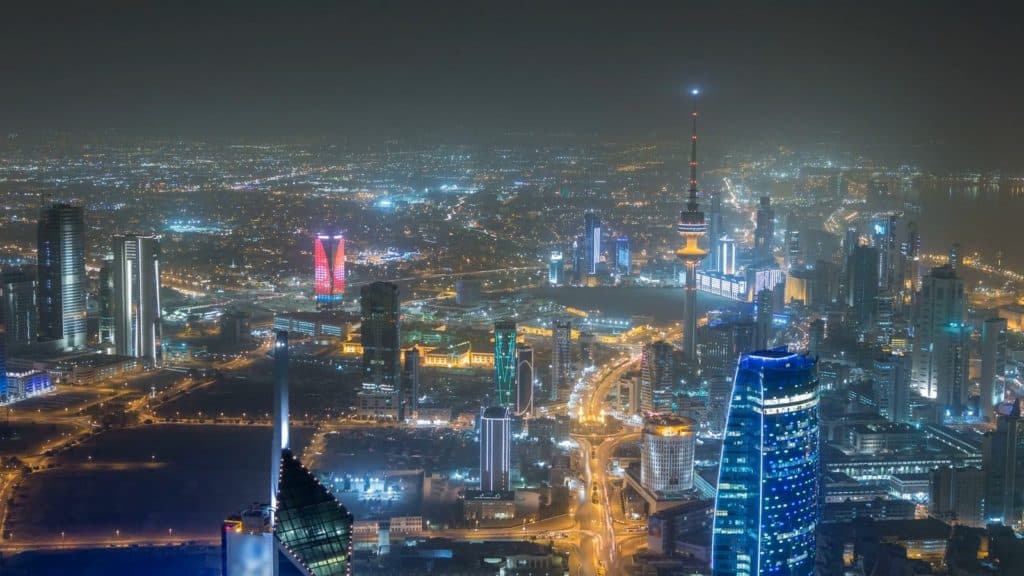
Situated at the tip of the Persian Gulf, this Arab Asian country is officially known as the State of Kuwait. From 1946 to 1982 the country has undergone large-scale modernization basically from the oil production income. Kuwait has Iraq to the north and Saudi Arabia to the south and might be the only country in the world where the number of foreign nationals is more than its native people.
The best time to visit Kuwait would be during the winter or spring season since summers in Kuwait are the hottest on earth. One of the most significant events taking place in Kuwait is the Hala Febrayr “Hello February” which is a musical festival that runs over the month of February in celebration of the Liberation of Kuwait. The festival comprises concerts, carnivals and parades.
What Not to Miss in Kuwait
1. Sadu House:
Established in 1980, Sadu House is an art house and museum in the capital city Kuwait City. It was built with the interest of preserving the Bedouins and their ethnic handicrafts. These handicrafts are characterized by Sadu weaving; a form of embroidery in geometrical shapes.
The original building existed since the early 20th century but had to be rebuilt after its destruction in the 1936 floods. By 1984, the house had registered 300 Bedouin women who produced over 70 embroidered items in a week. Sadu House has several chambers with decorations of pottered motifs of houses, mosques and other buildings.
2. Bait Al-Othman Museum:
This historic museum is dedicated to the history and culture of Kuwait from the pre-oil era until the present day. Located in the Hawalli Governorate in Kuwait City, this museum has several mini museums such as the Kuwait Drama Museum, Kuwait House Museum, Heritage Hall, Kuwaiti Souq and Journey of Life Museum. Bait Al-Othman has rooms such as housh (courtyard), diwaniyas and muqallatt of the old era in the country.
3. Kuwait National Cultural District:
The multi-billion-dollar development project focuses on arts and culture in Kuwait. The project is one of the largest cultural projects in the world today. Kuwait National Cultural District is a member of the Global Cultural Districts Network.
The district comprises of:
- Western shores: Sheikh Jaber Al-Ahmad Cultural Centre and Al Salam Palace.
- Eastern shores: Sheikh Abdullah Al-Salem Cultural Centre.
- Edge of the City Center: Al Shaheed Park Museums: Habitat Museum and Remembrance Museum.
The Sheikh Jaber Al Ahmad Cultural Centre is both the largest cultural centre and opera house in the Middle East. Al-Salam Palace is a historic house and museum and was designed by the Egyptian architect Medhat Al-Abed. The Abdullah Al-Salem Cultural Center is the world’s largest museum project. While Al-Shaheed Park was the largest green project to be undertaken in the Arab World.
Oman
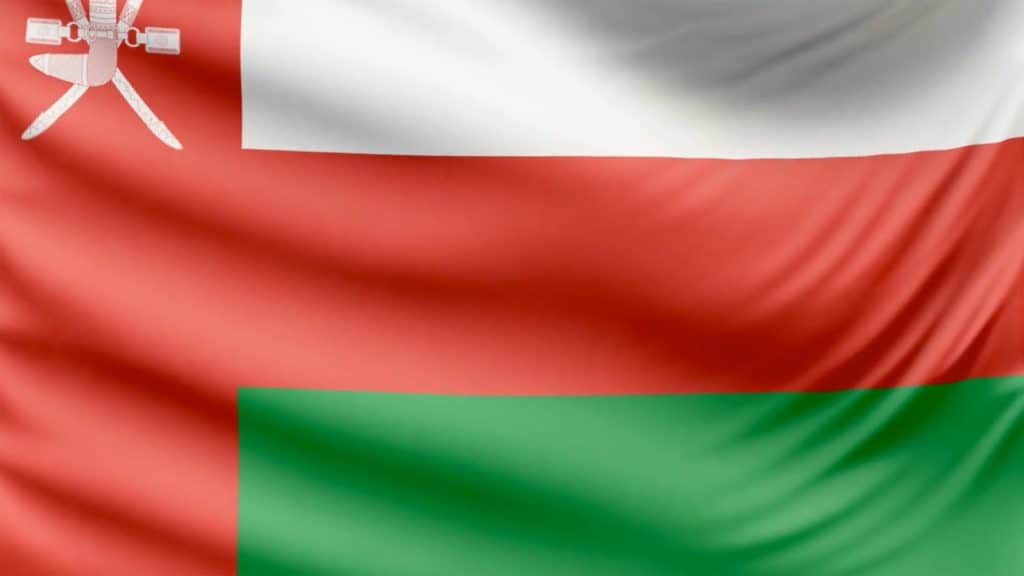
Officially called the Sultanate of Oman, it is located on the southeastern coast of the Arabian Peninsula. Oman is the oldest continuously independent state in the Arab World and Arab Asian countries and was once a maritime empire. The once empire had battled with the Portuguese and British Empires over control of the Persian Gulf and the Indian Ocean. The capital of the Sultanate is Muscat which is also the largest city. The World Travel and Tourism Council stated that Oman is the fastest-growing tourist destination in the Middle East.
What Not to Miss in Oman
1. Sultan Qaboos Grand Mosque:
Built-in 1992, this is the largest mosque in the country. This magnificent architectural design with colourful Persian carpets and Italian chandeliers was built using Indian sandstone. There’s a gallery of Islamic Art at the complex of the mosque. There’s also a beautiful garden where you can drink tea while learning more about the Islamic religion from local guides.
2. Khor ash Sham:
The clear blue water of Khor ash Sham is the perfect sight to help you relax. These shores are full of diverse marine life awaiting your company and the coastline is dotted with several villages that are ideal for exploration. There’s also the Telegraph Island that was used by the British during the middle of the 18th century. The island might be abandoned now but it’s worth trekking up there to enjoy a full view of the entire area.
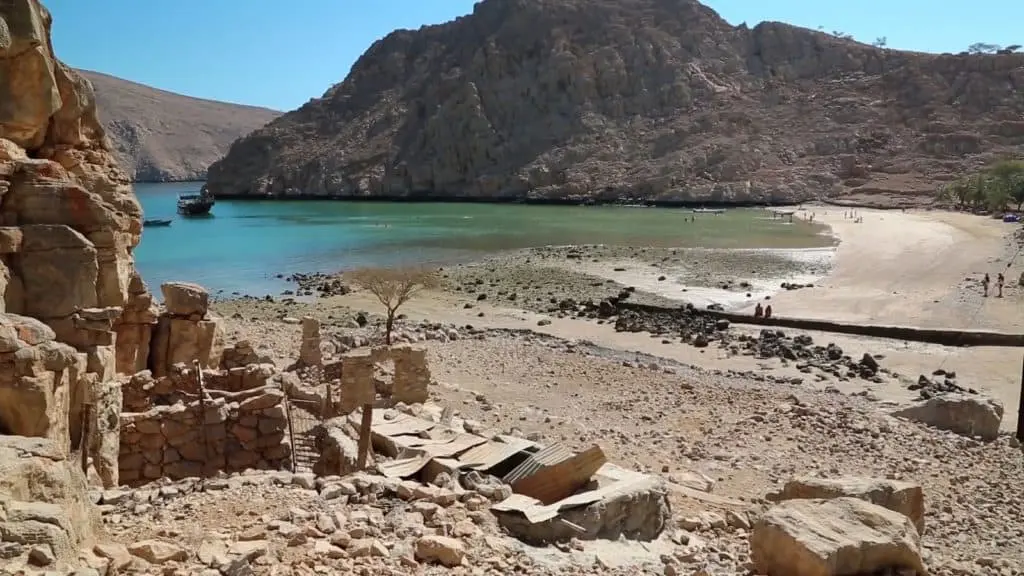
3. Wahiba Sands:
Are you ready for a night of watching the sun set over golden and orange sand dunes awaiting the stars to start shining in the dark navy sky? The Wahiba Sand Dunes in eastern Oman are made of huge mountain dunes that could be over 92 meters high. You can camp for a more relaxed day or you can explore the beautiful desert on the back of a camel or if you’d like, you can rent a jeep to leisurely cruise through at your own pace.
4. Muttrah Souk:
The Muscat main market is a shopper’s paradise. The souk is packed with shops, stalls and booths selling everything you can think of. The souk is massive and is mostly an indoor market with a few shops dotted outside. You will find everything you want from jewels to traditional handicrafts and souvenirs. One important tip is to always negotiate the prices, that’s what markets are for.
Qatar
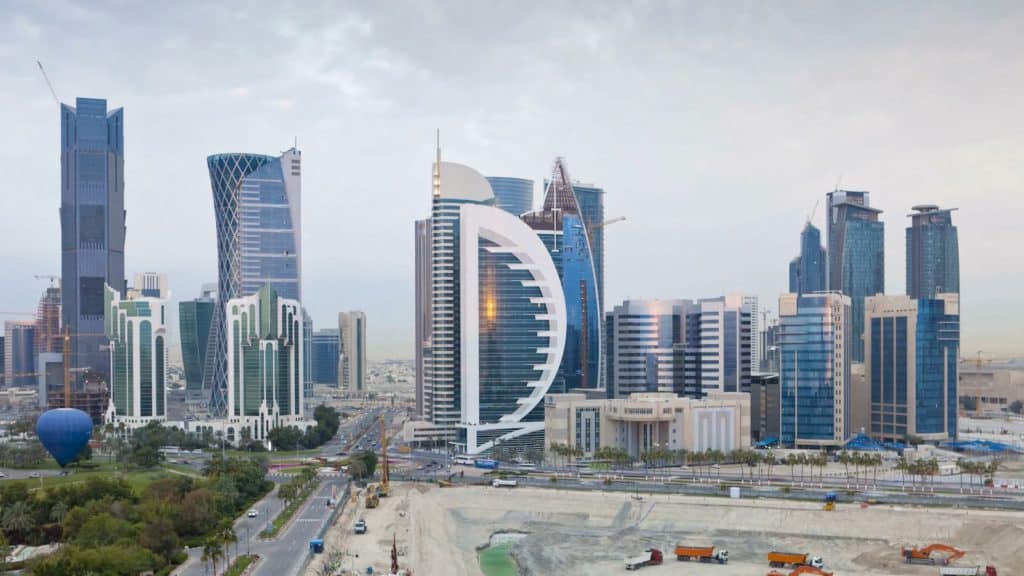
This Arab Asian country is officially known as the State of Qatar, it is located on the northeastern coast of the Arabian Peninsula and its only land border is with Saudi Arabia. Qatar has the world’s third largest natural gas reserves and oil reserves and is the world’s largest exporter of liquified natural gas. Qatar was classified by the UN as being a country of high human development and the capital is Doha.
What Not to Miss in Qatar
1. Film City:
Located in the middle of the Qatari desert, this city is a mock village that was built for a television series or a film. The city is a replica of a traditional Bedouin village and is completely deserted which adds more mystique to the area. The village is located in the secluded desert peninsula of Zekreet and visitors are free to walk through the streets of the small village and climb the turrets.
2. Al-Thakira Mangroves Forest:
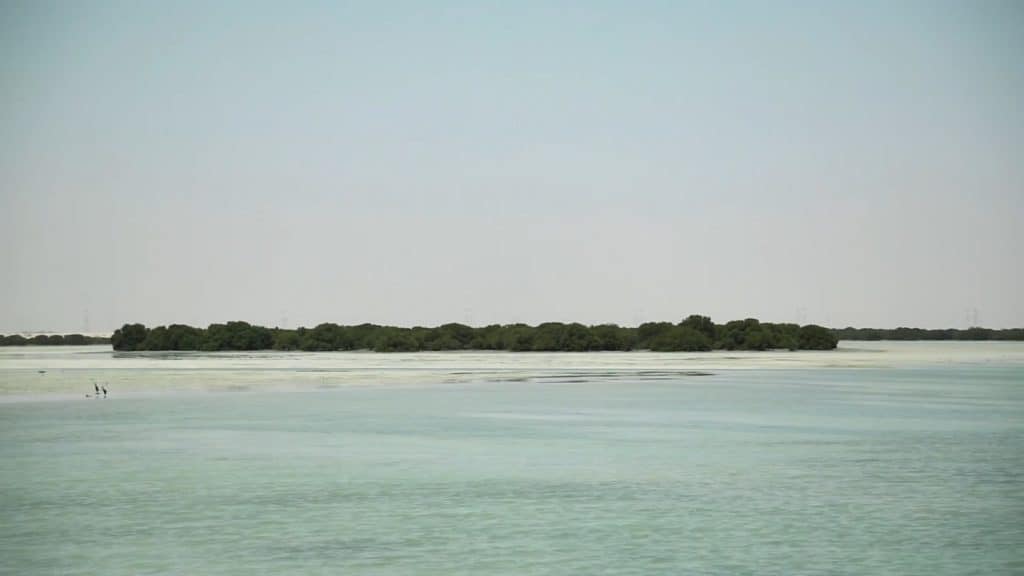
If you’re up for a small trip in a kayak you might like to row through this rare forest. Mangroves are such a unique ecosystem both above and beneath the water. Beneath the surface, the branches are covered with salt, seaweed and tiny shells. During high tide, fish swim between the branches and pencil roots accompanied by migratory birds. Throughout the year, you can see various types of fish and crustaceans.
3. Al-Jumail:
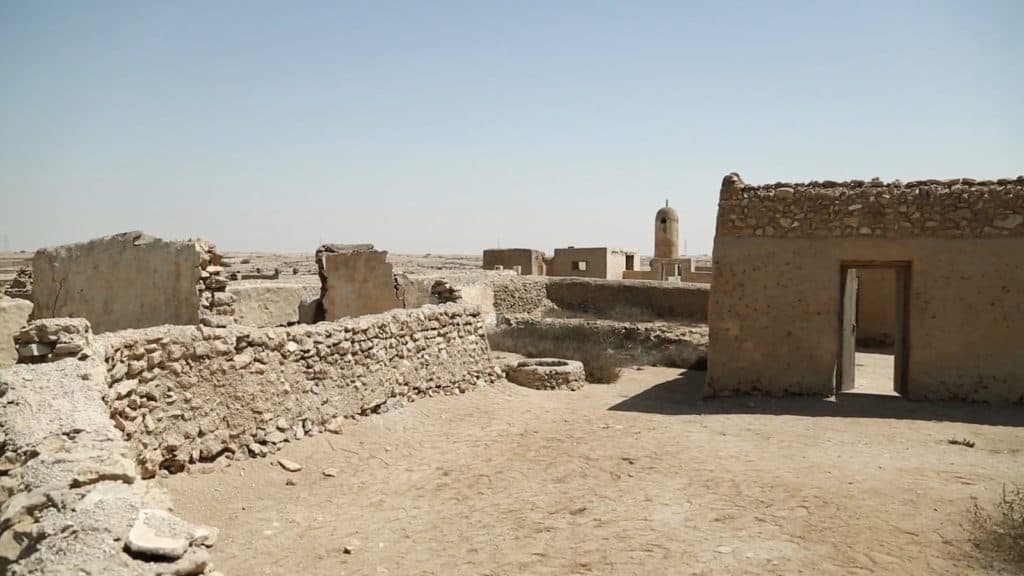
This is a 19th-century pearling and fishing village that was abandoned after the discovery of oil and petroleum in the country. Only the doorways and tracts of the old houses in the village remain now. The grounds are decorated with shards of pottery and broken glass. A mesmerizing feature of the village is its mosque and its minaret.
4. Orry the Oryx Statue:
The Oryx is the national animal of Qatar and this statue depicting an oryx was built as a mascot for the 2006 Asian Games which were held in Doha. The standing mascot is wearing a t-shirt, gym shorts, and tennis shoes and is holding a torch. The statue is located on the Doha Corniche and not far away from it is the Pearl Statue which was built to honour Doha’s pearl industry.
Saudi Arabia
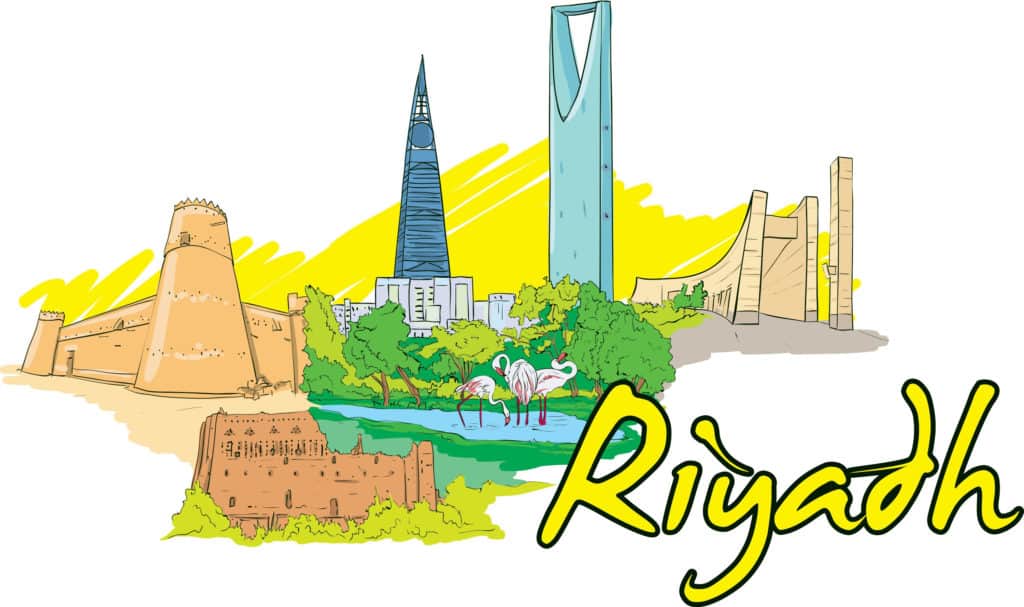
Officially called the Kingdom of Saudi Arabia, it is the largest country in the Middle East as it spans out taking much of the area of the Arabian Peninsula. Saudi is the only country with a coastline along both the Red Sea and the Persian Gulf. Its capital city is Riyadh and it is home to the two holiest cities in Islam; Mecca and Medina.
The prehistory of Arab Asian Saudi Arabia shows some of the earliest traces of human activity in the world. The kingdom has been recently seeing a boom in the tourism sector apart from a religious pilgrimage. This boom is one of the main components of the Saudi Vision 2030.
What Not to Miss in Saudi Arabia
1. Dumat Al-Jandal:
This ancient city that is now in ruins was the historical capital of the Al-Jawf Province in northwestern Saudi Arabia. The ancient city of Duma was described as “the stronghold of the Arabians”. Other scholars identify the city as being the territory of Dumah; one of the 12 sons of Ishmael mentioned in the Book of Genesis. One of the not to be missed structures in the city of Duma is the Marid Castle, Umar Mosque and Al-Dar’I Quarter.
2. The Multicultural Souqs of Jeddah:
These souqs are some of the best places where you can find several native products from the different cultures mingling in the kingdom. The souqs include the Old Turkish and Afghan Souq with have the best handwoven carpets you’ll ever buy, and the Yemeni Souq which sells all Yemeni products you would desire from food to pottery and clothes.
Souq of Khans where all markets and cultures from South Asia merge together giving off the most colourful vibes. Finally, you have the Souqs of Historical Jeddah which has shops and stalls that have been in the same place for over 140 years. You need to look no more for anything as you will find it at the souqs of Jeddah. A bonus is that you can always bargain for the best price!
3. Farasan Islands:
Not known for its human history, this group of islands are rich in marine life. Located off the shore of the southern province of Jazan, this group of coral islands are the perfect spot for diving and snorkelling. Several civilizations have left their mark on the place throughout history as early as the 1st Millennium BC; the Sabeans, Romans, Aksumites, Ottomans and the Arabs.
The mangrove forest of the islands attracts several wildlife species such as the Sooty Falcon, Pink-Backed Pelican, White-Eyed Gull and even Flamingos. The endangered Farasan Gazelle can be seen in some of the islands, though it’s very rare.
4. Al-Ahsa (Saudi’s Largest Oasis):
Escape the city life to this historical and natural retreat. A UNESCO World Heritage Site, Al-Ahsa’s blanket of green palm trees gives such a peaceful atmosphere. With a thick blanket of 30 million palm trees, clearing your mind is a guarantee and don’t forget to try the famous Khalas dates which grow in the oasis.
While there you must check the Al-Qara mountains which are famous for their beautiful lime caves. The Dougha Handmade Pottery Factory sheds light on the industry of pottery through the ages and how the craft passed down from generation to generation over the years.
The United Arab Emirates (The UAE)
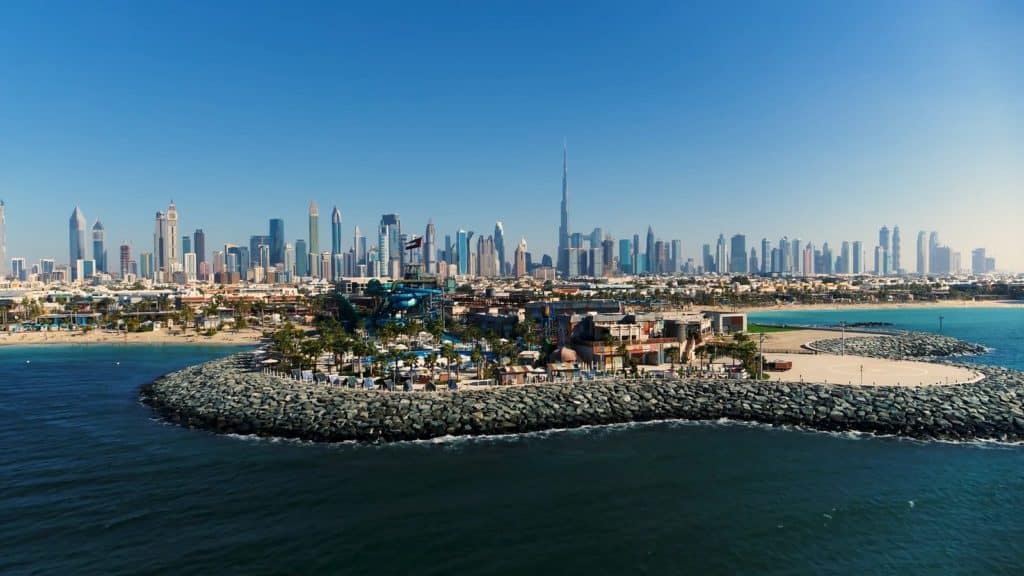
The United Arab Emirates is a group of seven emirates: Abu Dhabi which is the capital, Ajman, Dubai, Fujairah, Ras Al-Khaimah, Sharjah and Umm Al-Quwain. This Arab Asian country’s oil and natural gas reserves contributed greatly to the development of the emirates through investments in healthcare, education and infrastructure. Dubai which is the most populated emirate is an international tourist hub.
What Not to Miss in the UAE
1. Miracle Garden – Dubai:
Consisting of a whopping 45 million flowers, this indeed “Miracle Garden” is the largest natural flower garden in the world. Another miraculous factor is that this garden exists in the harsh weather of the city of Dubai. The fields of flowers are shaped like hearts, igloos and some of the most distinguishable buildings that have made Dubai famous before such as Burj Khalifa.
2. Ski Dubai:
This is a ski resort, complete with a mountain inside the Mall of the Emirates. Just because you are in one of the hottest places on Earth, doesn’t mean you can’t ski and Dubai has made that possible. The impressive ski resort is complete with an artificial mountain, and ski runs including the world’s first indoor black diamond-rated course. There’s also a place where you can meet penguins. Peculiar, I know!
3. Gold Souk – Dubai:
This is where you can find all the intricate items made from gold and any other precious metals, the souk is regulated by the government so there’s no need to worry about authenticity. The souk is made up of shops of gold traders, diamond merchants and jewellers and the entire souk is covered yet it still maintains the feel of an open market.
4. Sheikh Zayed Grand Mosque – Abu Dhabi:
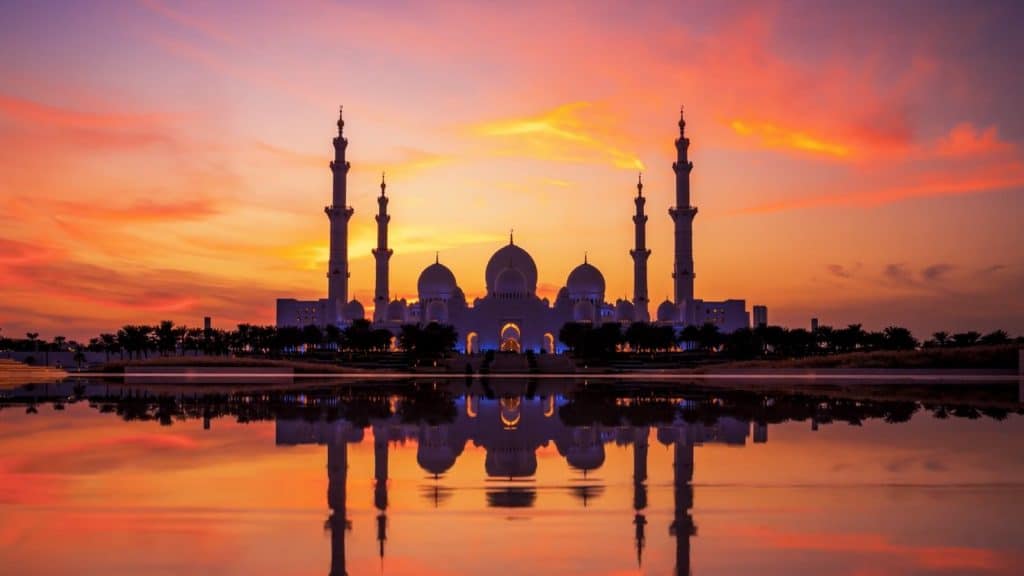
Commissioned by Sheikh Zayed Bin Sultan Al-Nahyan, he is known as the father of the UAE as he worked tirelessly towards the modernization of the country. Construction began in 1996 and was finished in 2007; three years after Zayed’s death. One of the largest mosques in the world also houses the largest carpet in the world at a staggering 35 tons.
5. Ferrari World – Abu Dhabi:
Fancy a spin in a real Ferrari? Well, you’ve come to the right place. Ferrari World is the world’s largest indoor theme park, its unique shape looks like a three-pointed star when viewed from the air. Inside this amusement park, you can walk through an actual Ferrari factory, take a spin in a real Ferrari and walk through a gallery of over 70 old models of the brand.
You can take the Bell’Italia ride which takes you through the most notable Italian attractions such as the city of Venice and Ferrari’s hometown of Maranello. You can also take the thrilling ride of the world’s tallest roller coaster loop and the famous “Formula Rossa”.
6. Fujairah Fort – Al-Fujairah:
Built in the 16th century, this fort is the oldest and largest castle in the UAE. The fort played an essential role in defending the lands against foreign invasions. It was built using local materials such as rock, gravel and mortar. After the British navy destroyed three of its towers in 1925 the building was abandoned until the Fujairah Municipal Administration began its restoration in 1997.
7. Mezayed Fort – Al-Ain:
While not much of the fort’s history is known, the place was built in the 19th century and looks like it was pulled out of an old Saharan movie. Some say that the fort once was a police station, a border post and was occupied by a British parliamentary group. The fort is the perfect place for you to unwind from the busy life of the city.
Yemen
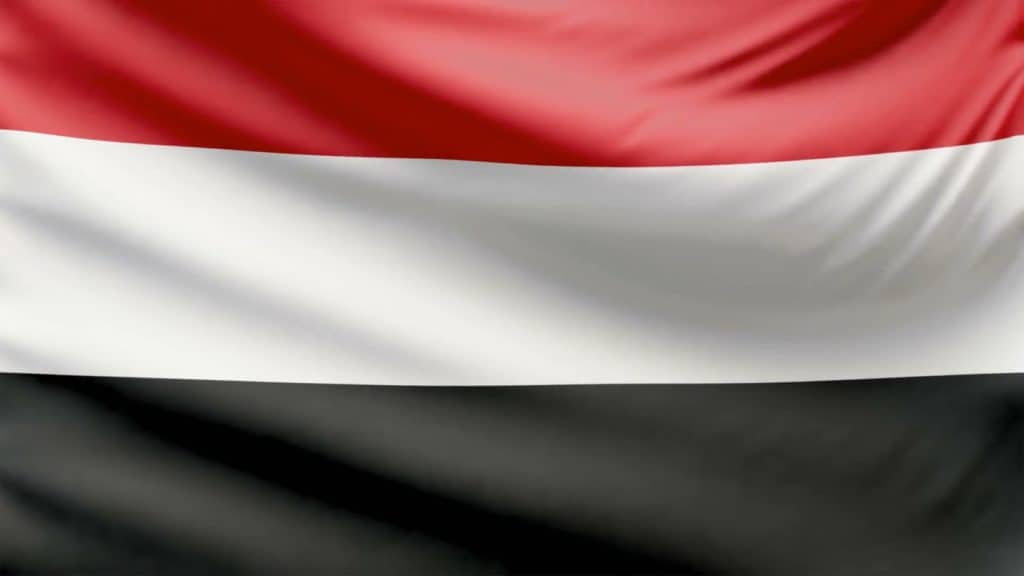
The Arab Asian country of Yemen, officially the Republic of Yemen is the last country in the Arabian Peninsula. Yemen enjoys a long coastline of over 2,000 kilometres and its capital and largest city is Sana’a. Yemen’s history stretches back in time to almost 3,000 years. Unique buildings of the capital seem like a scenic shot from an old film, made with mud and stone, they add to the exquisite feeling the city of Sana’a gives.
What Not to Miss in Yemen
1. Dar Al-Hajar (Stone Palace) – Sana’a:
The exquisite palace looks as if it were carved from the huge column on which it stands. Although the palace looks as ancient as time, it was actually built in the 1930s by an Islamic spiritual leader named Yahya Mohammad Hamiddin. It is said there was a previous building before this one that was built in the 1700s.
The five-story building is currently a museum where visitors can explore the rooms, kitchen, storage rooms and appointment rooms. Dar Al-Hajar is a fine example of Yemeni architecture. The outside of the palace is just as magnificent as the inside.
2. Bayt Baws – Sana’a:
Located in the heart of Yemen, this nearly abandoned Jewish settlement is built on the top of a hill in the middle of Yemen. It was built by the Bawsites during the Sabaean Kingdom. The hill on which the settlement is built has slopes on three sides and is only accessible through the south side.
The oldest archaeological record of a Jewish community in Yemen goes back to 110 BC. Most gates that lead to the courtyards inside are open and you can wander inside and you can enter the settlement at any time. The children residing around the settlement will likely follow you as you explore it.
3. Dragon’s Blood Tree – Socotra:
Socotra is one of four islands in the Socotra Archipelago along two rocky islets at the southern limit of the Gulf of Aden. The Dragon’s Blood Tree is a species of tree called Dracaena Cinnabari which is a tree in the shape of an umbrella. The tree has been sought since ancient times for its red sap as it was thought to be the dragon blood of the ancients as they used it as a dye while today it is used as a paint and varnish.
4. Sand-Surfing – Socotra:
While you’re at the Socotra Archipelago, you can have an interesting experience by surfing the sands on the biggest island of Socotra. You will ride a special board down the white sandy beach of Socotra, even if you don’t have experience surfing, a professional can help you get the hang of things.
5. Shaharah Fortified Mountain Village:
There are many fortified mountain villages in Yemen but Shaharah is by every means the most wonderful one. The only way to reach this dramatic village is through an arched stone bridge which spans out one of the mountain gorges. Shaharah was able to withstand the turbulences of war due to its secluded location which made it almost impossible to reach.
6. Queen Arwa Mosque – Jiblah:
Built with the intention of being a palace, the Queen Arwa Mosque’s construction began in 1056. Queen Arwa after which the mosque is named was an esteemed ruler of Yemen. She became a co-ruler of Yemen with her mother-in-law after her husband inherited the position according to the law but was unfit to rule.
Arwa ruled with her mother-in-law until her passing and her first decision as a sole ruler was to move the capital from Sana’a to Jiblah. Then she ordered the Dar Al-Ezz palace to be repurposed into a mosque. Queen Arwa remarried after her first husband died and she ruled with her husband until his death and ruled solely until her death. Arwa was buried in the Queen Arwa Mosque.
Sinai Peninsula – Egypt
Although the majority of the Arab Republic of Egypt is located in Africa, the Sinai Peninsula acts as a bridge between the African continent and the Asian one. The rich history of this triangular peninsula earned it important significance politically, religiously and economically. Today, Sinai is a popular tourist destination with its golden beaches, renowned resorts, colourful coral reefs and sacred mountains.
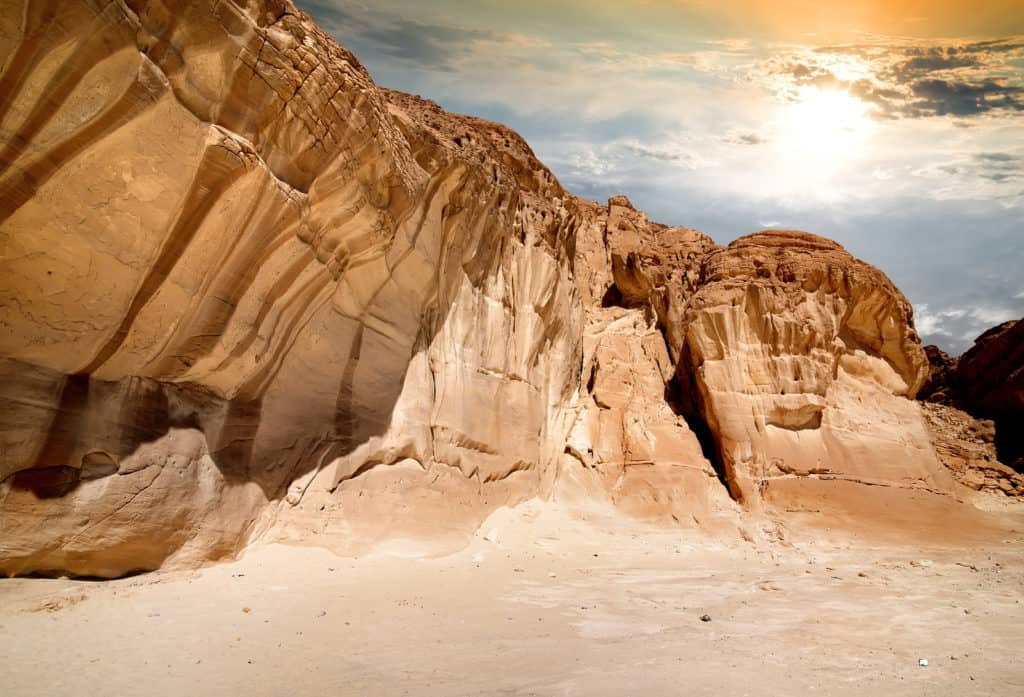
What Not to Miss in Sinai
1. Sharm El-Sheikh:
This beach city resort has evolved greatly over time and is the most popular one among tourists. The city has attracted several international conferences and diplomatic meetings and was named the City of Peace in reference to the great number of Peace Conferences held there. Sharm El-Sheikh is located on the Red Sea coast of the southern governorate of South Sinai.
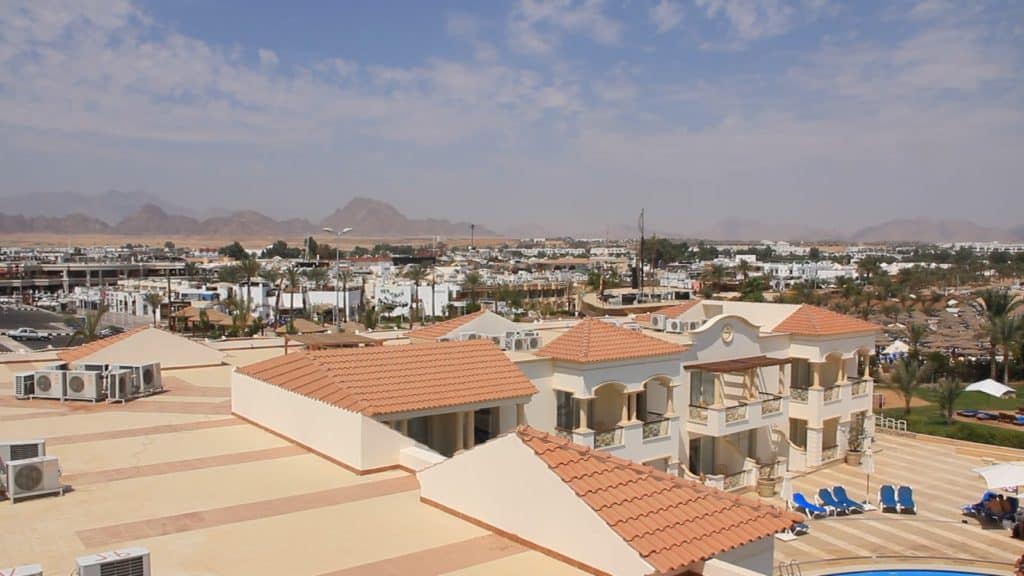
The perfect all-year-long weather in Sharm El-Sheikh makes it the ideal tourist destination. The city has diverse marine life on its long beaches along with a variety of water sports available by the different world-renowned hotels in the city. Not to mention the thriving nightlife in Sharm, with its most famous Soho Square and the beautiful Bedouin crafts adorn the street stands.
2. Saint Catherine’s Monastery:
Named after Catherine of Alexandria, this monastery is one of the oldest working monasteries in the world, also housing the oldest working libraries in the world. The monastery’s library houses the second largest collection of early codices and manuscripts in the world, outnumbered only by The Vatican. The monastery is located in the shadow of three mountains; Ras Sufsafeh, Jebel Arrenziyeb and Jebel Musa.
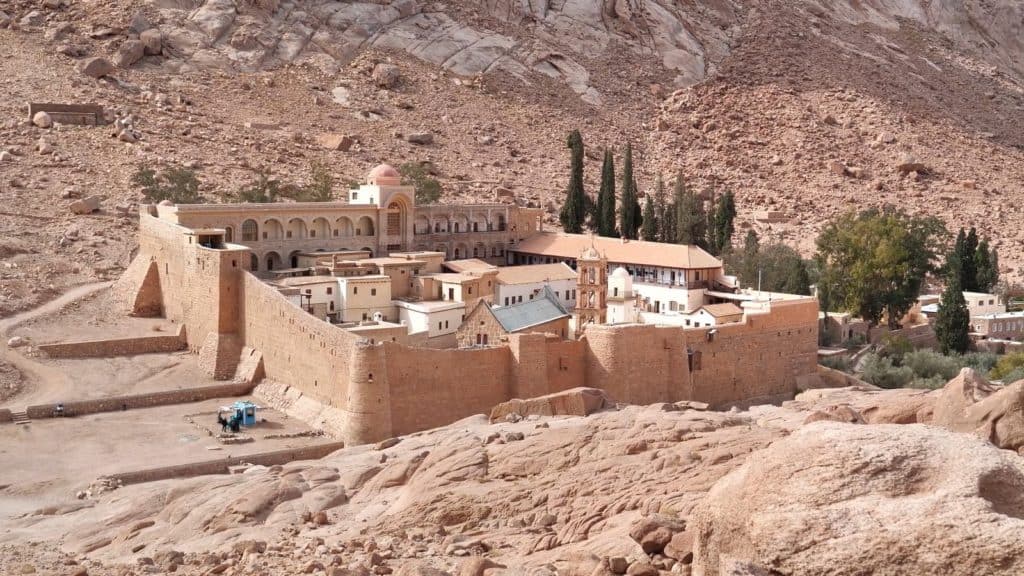
The monastery was constructed between 548 and 656 upon orders from Emperor Justinian I to enclose the Chapel of the Burning Bush, the currently living bush is said to be the one seen by Moses. Nowadays, only the monastery remains of the entire complex and it is a venerated place by all major religions in the world; Judaism, Christianity and Islam.
3. Mount Sinai:
Watching the sunrise from the summit of Mount Sinai is the most exhilarating experience you can go through. Traditionally known as Jebel Musa, the mountain offers breathtaking views over the surrounding mountains even though it is not the highest peak in Egypt; Mount Catherine is the highest. Jebel Musa is believed to have been the mountain where Moses received the Ten Commandments.
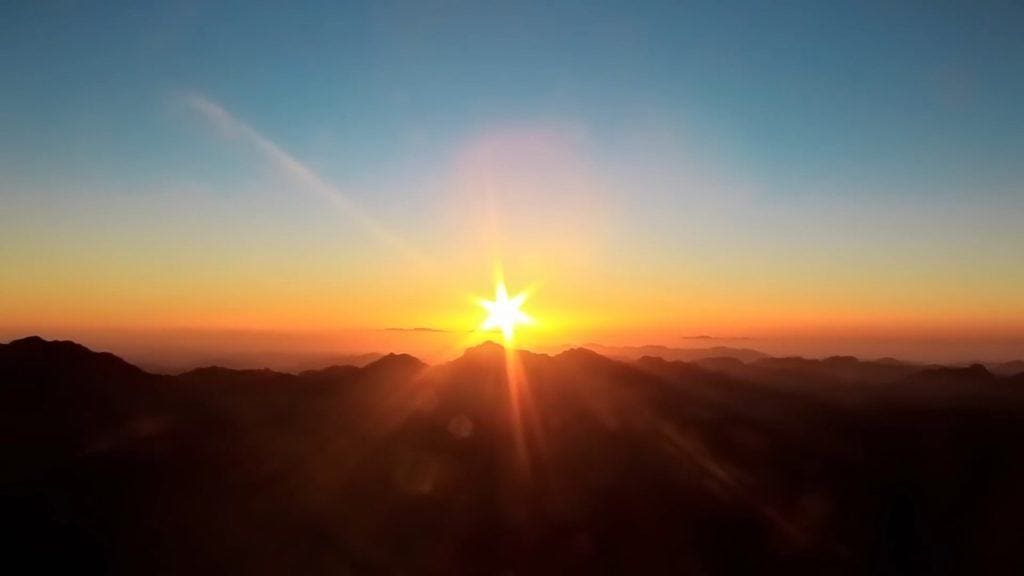
The mountain summit has a mosque that is still in use and a chapel built in 1934 but is not open to the public. Enclosed in the chapel is a stone believed to have been the source for the biblical Tablets of Stone on which the Ten Commandments were inscribed.
4. Dahab
A warm winter day with enough wind for windsurfing sounds like the best time to spend at the beach. Dahab is a small town on the southeast coast of the Sinai Peninsula. Or if you’re up for an adrenaline-packed adventure, you can go diving in the World’s Most Dangerous Diving Site or the Blue Hole. If peace and quiet are your goals, you can enjoy the sandy beaches along the town with occasional land activities such as cycling and camel or horse riding.
Iraq
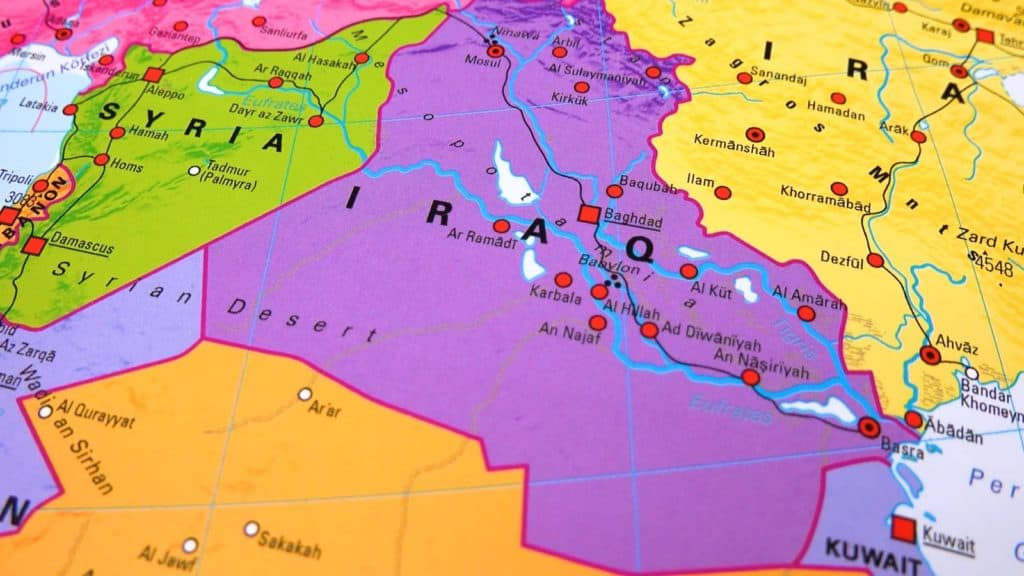
The Republic of Iraq is often referred to as the “Cradle of Civilization” as it was home to the first civilization; the Sumerian Civilization. Iraq is famous for its two rivers; Tigris and Euphrates which historically cradled the area known as Mesopotamia where humans first learned to read, write, create laws and live in cities under a governmental system. The Iraqi capital Baghdad is also the largest city in the country.
Iraq has been home to many civilizations since the 6th millennium BC and all through history. While being the centre of civilizations such as the Akkadian, the Sumerian, the Assyrian and the Babylonian. Iraq has also been an integral city of many other civilizations such as the Achaemenid, the Hellenistic, the Roman and the Ottoman civilizations.
The Iraqi diverse heritage from both pre-Islam and post-Islam eras is celebrated in the country. Iraq is famous for its poets, painters, sculptors and singers as being some of the best in the Arab and Arab Asian Worlds. Some of Iraq’s famous poets are Al-Mutanabbi and Nazik Al-Malaika and of its prominent singers known as The Cezar; Kadim Al-Sahir.
What Not to Miss in Iraq
1. The Iraq Museum – Baghdad:
The first establishment of a museum in Iraq was in 1922 to house the artefacts found by archaeologists from Europe and the United States after the First World War. Credit goes to British traveller Gertrude Bell who started collecting the found artefacts in a government building in 1922. Later moved to what was known as the Baghdad Antiquities Museum. The move to the current building was made in 1966.
The museum is home to priceless artefacts from the Sumerian, Assyrian and Babylonian, pre-Islamic, Islamic and Arabian civilizations. The museum was looted during the 2003 invasion with over 15,000 pieces and artefacts stolen, since then the government has worked tirelessly to recover them. Up until its reopening to the public in 2015, it was reported that up to 10,000 pieces were still missing. In 2021, several news agencies reported that the US returned 17,000 stolen ancient artefacts to Iraq.
2. Mutanabbi Street – Baghdad:
Known as being the centre of literature in Baghdad, Al-Mutanabbi was one of Iraq’s most prominent poets who lived during the 10th century. The street is located at Al-Rasheed Street near the old quarter of Baghdad. Often referred to as a heaven for book-shoppers as the street is filled with bookstores, and street stalls selling books. The street was severely damaged after a bomb attack in 2007 and was reopened in 2008 after extensive repair works.
A statue of the famous poet; Al-Mutanabbi is erected at the end of the street. Through his poetry, Al-Mutanabbi showed great pride in himself. He spoke of courage, and philosophy of life and even described battles. His poems have been translated as he is considered one of history’s prominent poets, in the Arab world and the rest of the world as well.
3. Babylon Ruins – Hilla in Babil:
The foundation of the First Babylonian Dynasty is credited to Sumu-abum, though Babylon remained a small city-state in comparison to other cities in the empire. It wasn’t until Hammurabi; the 6th Babylonian King established his empire and chose Babylon as his capital that the city’s importance increased. The Code of Hammurabi; is the longest and best-preserved legal code written in the old Babylonian dialect of Akkadian.
In present-day Babylon you can see some of the old city’s walls, you can feel the history between these walls especially after the massive restoration works undertaken by the government. You will pass through the famous Ishtar Gate; named after the goddess of love and war, the gate is guarded by bulls and dragons; symbols of the Marduk. The ruins are overlooked by an old Saddam Hussain palace, which you can enter and enjoy the view of the entire ancient city.
4. Erbil Citadel – Erbil:
The Erbil Citadel refers to a tell or mound where an entire community once lived in the heart of Erbil. The citadel area has been claimed to be the most continuously inhabited town in the world. The citadel first appeared in historical sources during the Ur III era and although the citadel had great importance under the Neo-Assyrian Empire, its importance declined after the Mongolian invasion.
A statue of a Kurd reading guards the citadel gate. The citadel was evacuated in 2007 to undergo restoration works. The current buildings in the vicinity of the citadel are Mulla Afandi Mosque, the Textile Museum (carpet museum) and the hammams that were built back in 1775. Since 2014, the Erbil Citadel has been a UNESCO World Heritage Site.
5. Sami AbdulRahman Park – Erbil:
Close to the old city, the citadel and even the airport, this massive park in the Kurdistan Region in Iraq is popular among locals and tourists alike. The place used to be a military base but that was changed and the park was started and finished in 1998. Sami AbdulRahman was the Deputy Prime Minister of the Kurdistan Regional Government.
The park is home to a rose garden, two great lakes, the Martyr’s Monument, a market and a restaurant, small cafés are dotted around the park so you can drink something or grab a quick bite. The place is perfect for all sorts of outdoor activities, great if you have kids along for the trip as well. It’s worth mentioning that Sami AbdulRahman Park is the finish line for the annual Erbil Marathon that takes place in October.
6. Piramagrun Mountain – Sulaymaniyah:
If you’re up for one adrenaline-packed hike trip, you can book a guided hiking trip up Piramagrun Mountain. Villages have taken place in different valleys around the mountain and while you can set up for a picnic there, you can continue the hike to the peak. Up there, besides enjoying a breathtaking view of the city displayed in front of you, you will find a cave with a pond inside to sit by and marvel at the clusters formed inside over the years.
Jordan
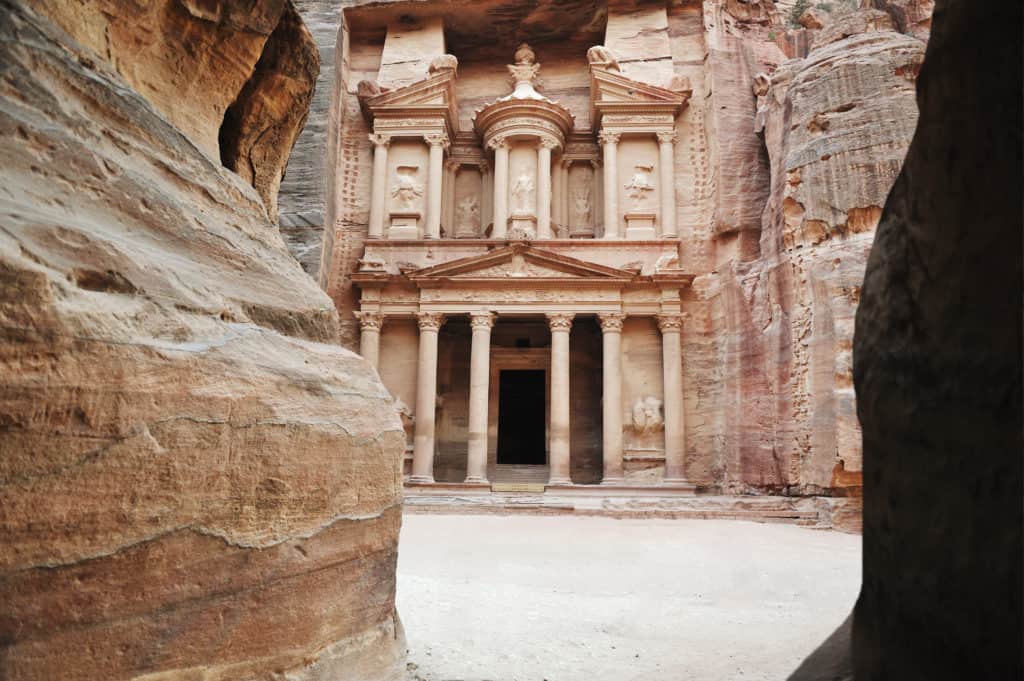
The Hashemite Kingdom of Jordan is located at the crossroads of three continents; Asia, Africa and Europe. The earliest inhabitants of the country go back to the Paleolithic period. The Arab Asian Jordan has come under the ruling of several old empires starting from the Nabataean Kingdom, the Persian and Roman Empires, and three Islamic Caliphates up until the Ottoman Empire. Jordan earned its independence from the British Kingdom in 1946 and changed its name three years later with Amman as the capital.
Dubbed an “oasis of stability” seeing as it wasn’t affected by the instability that followed the Arab Spring revolutions in 2011. Due to the well-developed health sector in the kingdom, medical tourism has been on the boom adding to the growing tourism sector. The best time to visit Jordan is during May and June, since summers can get really hot, the winter season is relatively cool with some rain and snowfall on some elevated areas.
It is said Jordan is home to about 100,000 archaeological and tourist sites. Some are of religious importance such as Al-Maghtas; where Jesus Christ is said to have been baptized. Seeing as Jordan is considered part of the Holy Land, pilgrims visit the country yearly. Muadh ibn Jabal is one of the Prophet Muhammed’s companions buried in Jordan. The preserved ancient city of Petra; a symbol of the country is the most popular tourist attraction.
What Not to Miss in Jordan
1. The Jordan Museum – Amman:
The largest museum in Jordan, the current museum building was inaugurated in 2014. The first museum known as the Jordan Archeological Museum was initially built in 1951 but over time it couldn’t host all the artefacts excavated. Construction of the new building began in 2009 and was opened in 2014.
The museum is home to some of the oldest statues of human form such as Ain Ghazal which are a staggering 9,000 years old. Ain Ghazal was an entire Neolithic village discovered in 1981. Some animal bones in the museum are a million and a half years old! Other items that tell stories of the history of Jordan such as scrolls from the Dead Sea Scrolls are housed in the museum.
2. Amman Citadel – Amman:
The historical site of Amman Citadel is in the middle of the city of Amman. The exact date of the building of the citadel is unknown yet the earliest existence in the location goes back to the Bronze Age as proven by uncovered pottery. About eight major civilizations flourished in the confines of the citadel, from the Kingdom of Ammon (after 1,200 BC) up to the Umayyads (7th century AD). Abandoned after the rule of the Umayyads, the citadel was reduced to ruins, only inhabited by Bedouins and farmers.
Some of the surviving buildings from the citadel today are the Hercules Temple, a Byzantine church and the Umayyad Palace. The citadel’s walls once enclosed other historic structures, tombs, walls and stairs. To this day, most of the citadel location awaits excavation. Many of the unearthed sculptures and artefacts discovered at the citadel site today are on display in the Jordan Archeological Museum built on the same hill in 1951.
3. Petra – Ma’an:
The Symbol of Jordan, this well-preserved historical city is one of the Wonders of the World. Even though the exact building date is put around 5th century BC, evidence of human habitat around the area goes back to about 7,000 BC. While it is estimated that the Nabataeans who inaugurated Petra as their capital settled in the city by the 4th century BC.
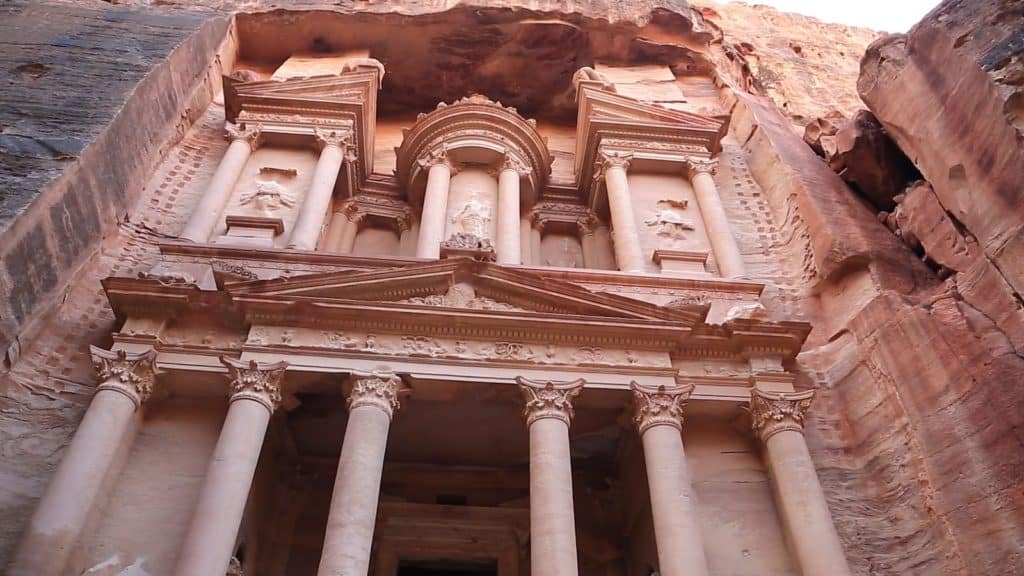
Known as the Red Rose City in reference to the red colour of the stone it was carved from. This sturdy material allowed a great portion of the city to survive through time. The surviving buildings include the famous Al-Khazneh (believed to be the mausoleum of King Aretas IV), Ad Deir or the Monastery dedicated to Obodas I and two temples of Qasr al-Bint and the Temple of the Winged Lions.
The ancient city of Petra is nestled between mountains and getting there resembles a hike. You will go up through about a two-kilometre gorge (called a siq) that would lead you directly to Al-Khazneh. The remaining buildings are located in what’s called the Petra Sacred Quarter. There are no words to describe the majesty and magnificence of Petra but the scenes you’ll witness will live in your memory forever.
4. Wadi Rum – Aqaba:
Sixty kilometres southern Jordan, to the east of Aqaba, there’s a valley that looks as if it were cut out from Mars and planted on Earth. Wadi Rum valley is an entire valley cut into granite and sandstone. With different shades of red dyeing the rocks of the valley, a trip to this Wadi is one you must not miss.
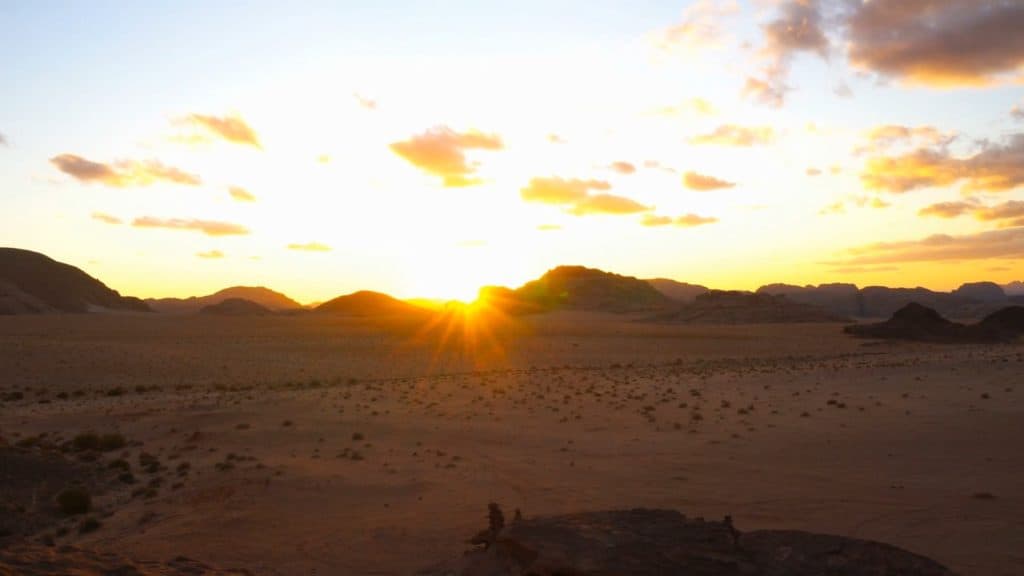
The Wadi has been home to prehistoric cultures with the Nabataeans leaving inscriptions of their existence on different mountains in the valley along with their temple. The vastness of the valley and its unique color palette made it the perfect site for the filming of many world-renowned movies starting from Lawrence of Arabia, Transformers: Revenge of The Fallen and most suitably the filming of The Martian.
The Zalabieh tribe, native to the valley developed eco-adventure tourism in the area. They provide tours, guides, accommodation, facilities, and run restaurants and shops to provide for the visitors. Camel rides, horseback riding, rock climbing and hiking are some of the many activities you can enjoy in Wadi Rum. You can also camp in the valley Bedouin style or outdoors under the starry sky.
5. The Ancient City of Jerash – Jerash:
Nicknamed Pompeii of The East, Jerash is home to one of the best-preserved Greco Roman cities in the world. The old city of Jerash has been inhabited since the Neolithic period as indicated by the rare human remains found at Tal Abu Sowan which go back to 7,500 BC. Jerash flourished during the Greco and Roman periods.
Even though the city was abandoned after its destruction by Baldwin II; King of Jerusalem, evidence was found that the city was resettled by Mamluk Muslims before the Ottoman Empire. Discoveries of structures dating back to the Middle Islamic or Mamluk period confirm this allegation. There are various Greco-Roman, late Roman, early Byzantine and early Muslim buildings remaining around the ancient city.
Greco-Roman remains include the two large sanctuaries dedicated to Artemis and Zeus and their temples and two theatres (the North Theater and the South Theater). Late Roman and early Byzantine remains include several old churches while old mosques and houses represent the Umayyad period.
The Jerash Festival for Culture and Arts is an international destination for all those interested in different forms of cultural activities. From July 22nd to the 30th, Jordanian, Arab and foreign artists gather to participate in poetry recitals, theatrical performances, concerts and other forms of art. The festival takes place in the ancient ruins of Jerash.
6. Seaside Recreation at the Dead Sea:
The Dead Sea is a salt lake in the Jordan Rift Valley and its tributary is the Jordan River. The lake is the lowest land elevation on earth with a surface that is 430.5 meters below sea level. The reason for naming it the Dead Sea is that it is 9.6 times as salty as the ocean which is a harsh environment for plants and animals to flourish.
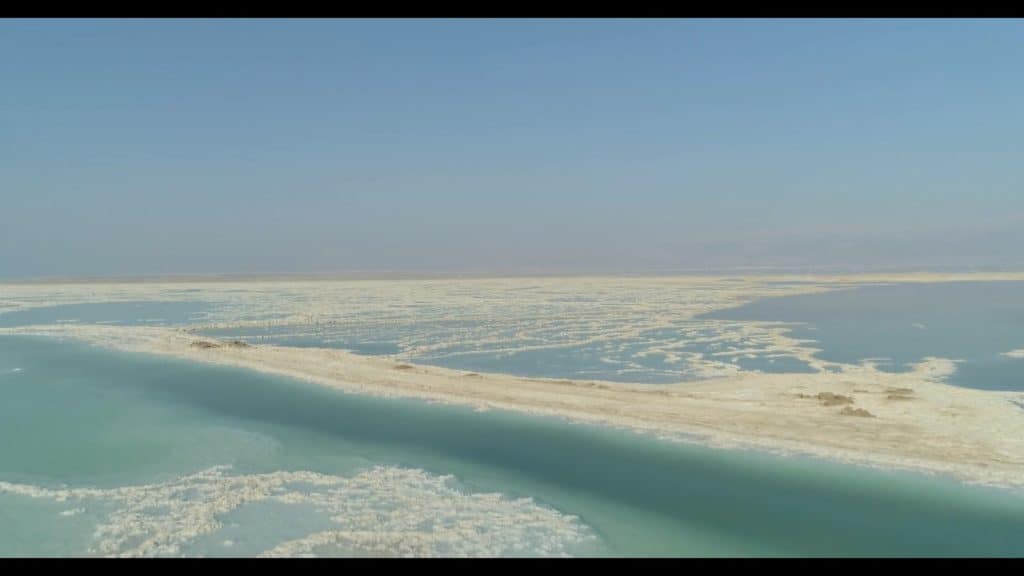
In addition to being a world hub of natural treatment, the Dead Sea is a supplier of many products such as asphalt. The Sea is often described as a natural spa and the high salinity of the water makes swimming in the sea more like floating. It was proved that the high salt concentration of the Dead Sea water is therapeutic to several skin diseases.
7. Jordan as Part of the Holy Land:
Al-Maghtass is an important religious sites along the Jordanian side of the Jordan River. The site is believed to have been the location where Jesus Christ was baptized. Madaba is famous for a massive Byzantine-era mosaic map of the Holy Land. The castle of the prominent Muslim leader Saladin known as Ajlun Castle was built in the 12th century AD in the Ajlun district in northwest of Jordan.
Lebanon
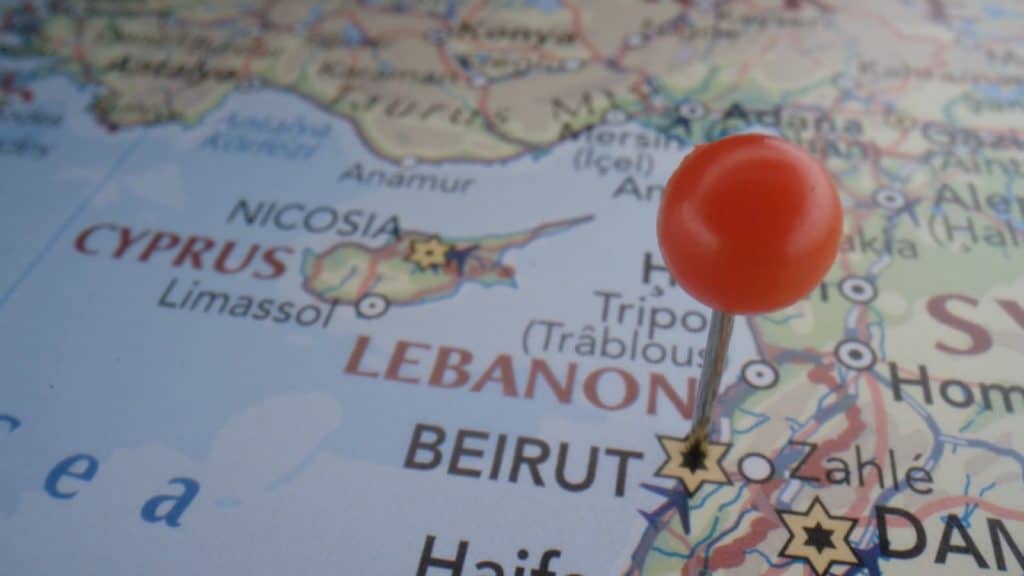
The Lebanese Republic is located at the crossroads of the Mediterranean basin in the Middle East. Lebanon is one of the smallest countries in the world being home to about six million people only. The country’s unique location made it culturally rich and ethnically diverse.
The rich history of Lebanon goes back to over 7,000 years ago, predating even recorded history. Lebanon was home to the Phoenicians during the first millennium BC and became an important centre for Christianity under the Roman Empire. Afterwards, Lebanon came under the rule of several empires; the Persian Empire, the Muslim Mamluks, the Byzantine Empire again, the Ottoman Empire up to the French occupation and the hard-earned independence in 1943.
The weather in Lebanon is a Mediterranean moderate one, as an Arab Asian country, it has cool rainy winters and hot and humid summers in the coastal areas with snow covering the mountaintops. The different aspects of Lebanese culture are well known across the world. Lebanon is packed with historical, religious and cultural sites and buildings.
What Not to Miss in Lebanon
1. Beirut National Museum – Beirut:
The principle museum of archaeology in Lebanon officially opened in 1942. The museum has a collection of about 100,000 artefacts of which 1,300 are currently on display. Objects displayed in the museum are arranged in chronological order starting from Prehistory on to Bronze Age, Iron Age, Hellenistic Period, Roman Period, Byzantine Period ending in the Arab Conquest and the Ottoman Era.
The museum was designed in French-inspired Egyptian-Revival architecture with Lebanese ochre limestone. Of the items in the museum’s collection, there are spearheads and hooks from the Prehistory period, the Byblos figurines dating back to the 19th and 18th centuries BCE. Achilles Sarcophagus from the Roman Period while coins and gold jewellery represent the Arab and Mamluk periods.
2. Mim Museum – Beirut:
This private museum displays more than 2,000 minerals representing 450 species from 70 countries. Creator of the museum; Salim Eddé, a chemical engineer and co-founder of the computer company Murex4 started his own private collection of minerals in 1997. In 2004, he wanted to make his collection available to the public so he pitched the idea of the museum to Father René Chamussy from the Saint Joseph University.
Father Chamussy reserved a building for the museum on the campus of the university that was then still under construction. Eddé continued to build the collection of the museum with the help of the curator of the Sorbonne collection; Jean-Claude Boulliard. The Museum finally opened to the public in 2013. In addition to minerals, the museum displays marine and flying fossils from Lebanon as well.
3. Emir Assaf Mosque – Beirut:
This prominent example of Lebanese architectural style was built in 1597. The mosque is located in downtown Beirut on the site of the former Serail Square that hosted Emir Fakhreddine’s palace and gardens. The mosque has a square shape with grey granite Roman columns supporting the central dome. The mosque underwent restoration works in the mid-1990s.
4. Gibran Museum – Bsharri:
Dedicated to the world-renowned Lebanese artist, writer and philosopher Gibran Khalil Gibran, this museum takes you through a journey inside his life. Gibran was born on January 6th, 1883 and is known around the world for his book, The Prophet which was translated into more than 100 languages. Gibran has been known as one of the co-founders of the Mahjari School of literature; having lived in the United States for the majority of his life.
The works of Khalil Gibran have been described as having had the most effect on the Arabic literary scene in the 20th century. The museum in which his body along with his writings, paintings and belongings reside, had been bought by his sister upon his request before his death. The building has a huge religious importance since it was once a monastery.
5. Shrine of Our Lady of Lebanon (Notre Dame du Liban) – Harissa:
The Queen and Patroness of Lebanon; the Virgin Mary extend her hands towards the city of Beirut. The Shrine of Our Lady of Lebanon is a Marian shrine and pilgrimage site. You can reach the shrine by road or by a nine-minute gondola lift known as telefrik. The 13-tons bronze statue at the top of the shrine is a depiction of the Virgin Mary and there is a Maronite cathedral of concrete and glass built beside the statue.
The statue is French-made and was erected in 1907 and both the statue and shrine were inaugurated in 1908. The shrine attracts millions of faithful Christians and Muslims from all over the world. The shrine is made up of seven sections assembled on top of the stone base of the statue. Our Lady of Lebanon is celebrated on the first Sunday of May and there are churches, schools and shrines all over the world dedicated to her, from Australia, South Africa and all the way to the United States.
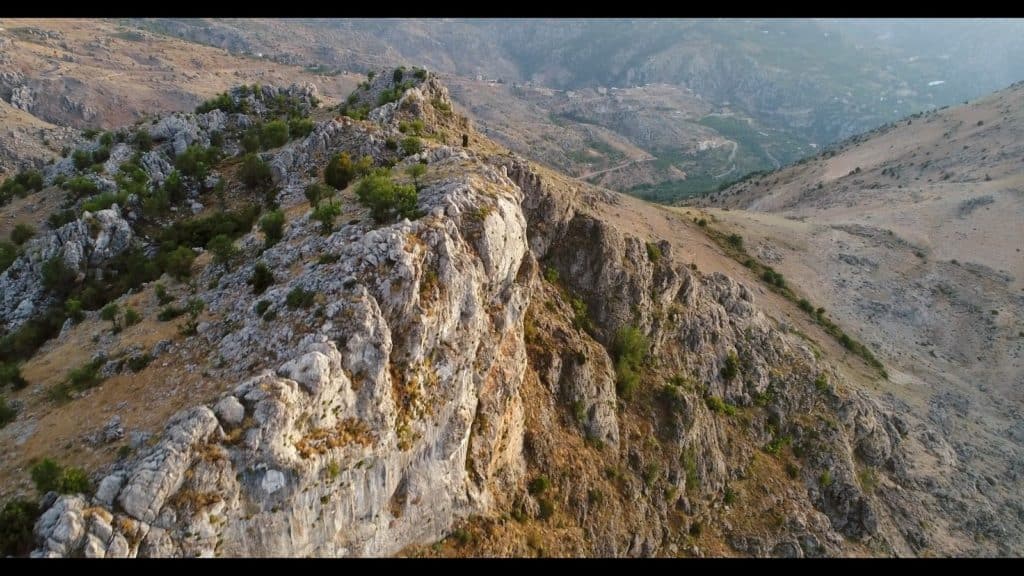
6. The Great Temples of Baalbek:
The city of Baalbek was listed as a World Heritage site in 1984. Once the sanctuary devoted to Jupiter, Venus and Mercury were venerated by the Romans. Over a course of two centuries, several temples were built around the once Phoenician village. The complex of great temples in the city is reached by walking through the grand Roman gateway or propylaea.
There are four temples in the complex of Baalbek, the Temple of Jupiter was the largest Roman temple with each column measuring two meters in diameter. The Temple of Venus is much smaller, has a dome and is located southeast of the complex. What remains of the Temple of Mercury is part of the staircase. The Temple of Bacchus is the best-preserved Roman temple in the Middle East, though its relation to the rest of the temples is still a mystery.
7. Shrine of Sayyida Khawla bint Al-Hussain – Baalbek:
This religious tourist attraction houses the tomb of Sayyida Khawla; the daughter of Imam Hussein and the great granddaughter of Prophet Muhammad in 680 CE. A mosque was reconstructed over the shrine in 1656 CE. A tree inside the mosque is said to be 1,300 years old and was planted by Ali ibn Husayn Zayn Al-Abidin.
8. Mar Sarkis, Ehden – Zgharta:
This monastery dedicated to Saints Sarkis and Bakhos (Sergius and Bacchus) is nestled between the folds of the Qozhaya valley. The monastery is called the Watchful Eye of Qadisha; located at an altitude of 1,500 meters, it overlooks the towns of Ehden, Kfarsghab, Bane and Hadath El-Jebbeh. The first church dedicated to the two saints was built in the mid-8th century AD on the ruins of a Canaanite temple dedicated to a divinity of agriculture.
After a history full of service to the Christian faith, the Monastery was given to the Antonin Maronite Order in 1739. The Zgharta Mar Sarkis Monastery was founded in 1854 as a shelter for Mar Sarkis monks from the harsh mountain climate. In 1938, the two monastic communities of Ehden and Zgharta were merged.
9. Byblos Castle – Byblos:
This Crusader castle was built in the 12th century from limestone and the remains of Roman structures. The castle belonged to the Genoese Embriaco family; the Lords of the town of Gibelet from 1100 till the late 13th century. The castle was captured and dismantled by Saladin in 1188 until the Crusaders recaptured and rebuilt it in 1197.
The almost square walls of the castle have towers at the corners that are built around a central keep. The castle is surrounded by and adjacent to many other archeological sites such as the ruins of the Temple of Baalat and the famous L-Shaped Temple. The entire city of Byblos is a UNESCO World Heritage Site.
The castle is home to the Byblos Site Museum which contains findings of excavations conducted at the site of the castle. The most important findings, however, are on display in the National Museum of Beirut.
10. Catholic Shrine of Saint Charbel – Byblos District:
Known as the Miracle Monk of Lebanon, Saint Charbel Makhlouf was the first Lebanese saint. His followers say they call him the Miracle Monk because their prayers were always answered when they asked for his help, for the miraculous healings they receive after asking for his help and also for his ability to unite Christians and Muslims. Saint Charbel was canonized by Pope Paul VI in 1977.
Youssef Antoun Makhlouf was raised in a pious home after the death of his father and the remarrying of his mother. He entered the Lebanese Maronite Order in 1851 in Mayfouq and later transferred to Annaya in the Byblos District. It was in the Monastery of St. Maron in Annaya where he received the religious habit of a monk and chose the name Charbel after a Christian martyr in Antioch from the 2nd century. Saint Charbel is celebrated on the 3rd Sunday in July according to the Maronite calendar and July 24th on the Roman calendar.
Syria
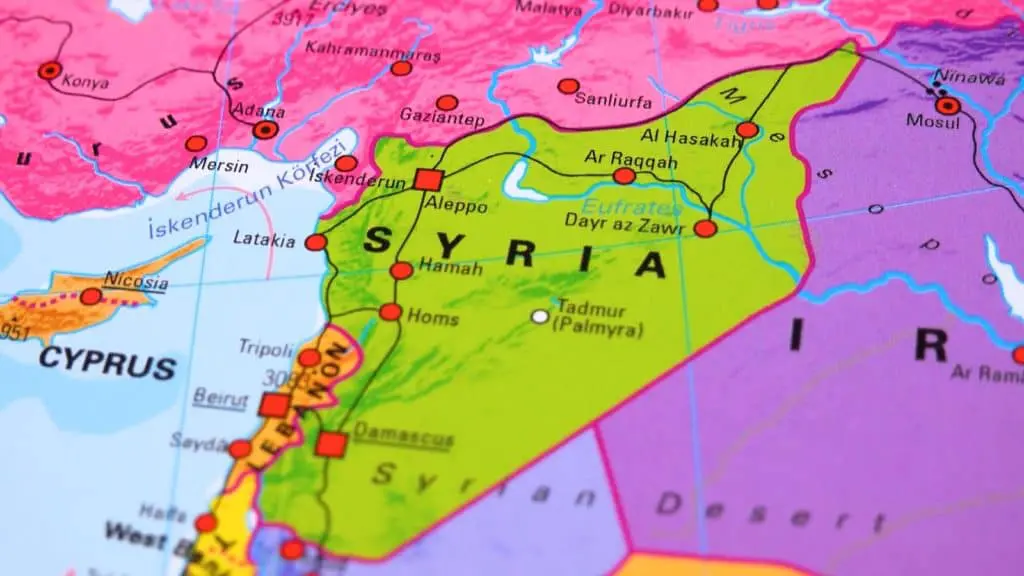
The Syrian Arab Republic once hosted several kingdoms and civilizations. Syria referred to a wider region back in time, even going back to 10,000 BC when agriculture and cattle breeding constituted the core of the Neolithic culture. Archaeologists have estimated that civilization in Syria is one of the earliest civilizations on earth, perhaps only preceded by that of Mesopotamia. Since around 1,600 BC, Syria has become a battleground for several foreign empires; the Hittite Empire, Mitanni Empire, Egyptian Empire, Middle Assyrian Empire and Babylonia.
Syrian prospered under Roman control since 64 BC but the split in the Roman Empire led to the fall of the area into Byzantine hands. In the mid-seventh century, Damascus became the capital of the Umayyad Empire and later fell under Ottoman rule from 1516. Syria came under the French Mandate in 1920 following WWI which was contested many times until it was under pressure from Syrian nationalists and the British forced France to evacuate its troops from the country.
Aleppo and the capital Damascus are among the oldest continuously inhabited cities in the world. Even though Syria is home to fertile plains, mountains and deserts. Tourism in the country has been crushed by the ongoing Civil War since 2011. With the hope of peace returning to this beautiful Arab Asian country, here’s what you can put on your visit list for when the time comes.
What Not to Miss in Syria
1. Al-Azm Palace – Damascus:
Home of the Ottoman governor; As’ad Pasha Al-Azm, the palace was built in 1749 in what is currently known as the Ancient City of Damascus. The palace is a prominent example of Damascene architecture and was a monument to 18th-century Arab architecture as the building was decorated with highly decorative elements.
The palace was home to the French Institute until the independence of Syria. In 1951, the Syrian government purchased the building and turned into the Museum of Arts and Popular Traditions. Today, you can still observe some of the original ornamental work from the time the palace was built and also see some traditional artistic works of glass, copper and textiles.
2. The Great Mosque of Damascus – Damascus:
Also known as the Umayyad Mosque, it is considered one of the oldest and largest mosques in the world. Located in the Old City of Damascus, this mosque holds significant value to both Christians and Muslims; dubbed the fourth holiest mosque in Islam. While Christians consider the mosque to be the burial place of John the Baptist’s head, known as Yahya for Muslims, Muslims believe it will be from here that Jesus Christ will return before the Doomsday.
The site has always hosted a place of worship since the Iron Age when a temple venerating the god of rain; Hadad. The site then held one of the largest temples in Syria to worship the Roman god of rain Jupiter. It was turned into a Byzantine church before eventually it was turned into a mosque under the Umayyad rule.
The distinct Arab architecture infused with the everlasting elements of Byzantine architects distinguishes the structure of the mosque. It has three distinctive minarets; the Bride Minaret is said to be named for the merchant’s daughter who was the bride of the ruler at the time it was built. The Isa Minaret is believed will be the point where Jesus comes back to earth during Fajr prayer. The last minaret is the Qaytbay Minaret which is named after the Mamluk ruler who ordered the renovation of the minaret after the 1479 fire.
3. Mausoleum of Saladin – Damascus:
The final resting place of the medieval Muslim Ayyubid Sultan Saladin. The mausoleum was built in 1196, three years after the death of Saladin and it is adjacent to the Umayyad Mosque in the Old City of Damascus. At one point, the complex included Madrassah Al-Aziziah in addition to the tomb of Salah Al-Din.
The mausoleum includes two sarcophagi; a wooden one said to contain the remains of Saladin and a marble one built in honour of Saladin by the Ottoman sultan Abdulhamid II at the end of the 19th century. Renovation work was carried out on the mausoleum by German emperor Wilhelm II in 1898.
4. The Old City of Damascus:
You will go on the greatest walking tour anyone can take in the streets of the Old City of Damascus. The streets bear the mark of old civilizations that once settled in this historic city such as the Hellenistic, Roman, Byzantine and Islamic civilizations. Engulfed by the walls of the Roman era, the entire historical center of the city was declared a UNESCO World Heritage Site in 1979.
The historical center is packed with historical sites and buildings. Religious buildings include remains of the Temple of Jupiter, Tekkiye Mosque and the Cathedral of the Dormition of Our Lady. The centre is also full of different souqs selling all your heart’s desires such as Al-Hamidiyah Souq which is the largest souq in the city.
5. The Dead Cities – Aleppo and Idlib:
Also known as the Forgotten Cities, these are about 40 villages distributed between 8 archeological sites in northwestern Syria. Most of the villages date from the 1st to the 7th century and have been abandoned between the 8th and the 10th centuries. The villages give an insight into the rural life in old Antiquity and the Byzantine period.
The settlements contain well-preserved remains of dwellings, pagan temples, churches, cisterns and bathhouses. The Dead Cities are located on a limestone area known as Limestone Massif. The massif is divided into three groups: the northern group of Mount Simeon and Mount Kurd, the group of Harim Mountains and the southern group of Zawiya Mountain.
6. Cathedral of Our Lady of Tortosa – Tartus:
This ancient Catholic church is described as the best-preserved religious structure of the Crusades. Built between the 12th and the 13th centuries, Saint Peter founded a small church in the cathedral dedicated to the Virgin Mary, making it popular among pilgrims during the era of the Crusades. The architectural style of the cathedral began as a traditional Romanesque style and leaned towards early Gothic in the 13th century.
In 1291, the Knights Templar abandoned the cathedral hence allowing its fall under the Mamluki rule. After that the cathedral was turned into a mosque and with the fluctuations of history, the cathedral was finally turned into the National Museum of Tartus. The museum exhibits archeological finds made in the area since 1956.
7. Krak des Chevaliers – Talkalakh/ Homs:
This UNESCO World Heritage Site is one of the most important and well-preserved Medieval castles in the world. Kurdish troops were the first inhabitants of the castle since the 11th century until it was given to the Knights Hospitaller in 1142. The Golden Age of the Krak des Chevaliers took place during the first half of the 13th century with modifications and fortifications undertaken.
Starting from the 1250s, the odds began to turn against the Knights Hospitaller as the Order’s finances declined sharply following several events. The Mamluk Sultan Baibars captured the castle in 1271 after a 36-days siege. The castle suffered some damage during the Syrian Civil War in 2013 and since 2014 restoration works have been carried out with annual reports by both the Syrian government and UNESCO.
8. Castle of Saladin – Al-Haffah/ Latakia:
This prestigious medieval castle stands high on a ridge between two deep ravines and is surrounded by forests. The site has been inhabited and fortified as early as the 10th century and in the year 975, the site came under Byzantine rule until 1108 when it was seized by the Crusaders. As part of the Crusader Principality of Antioch, a series of renovations and fortifications were undertaken.
The forces of Saladin began a siege in 1188 of the castle that eventually ended with its fall into the hands of Saladin. The castle flourished as part of the Mamluk Empire until at least the late 14th century. In 2006, the Castle was made a UNESCO World Heritage Site and after 2016, the castle was considered to have survived the Syrian Civil War.
Have I convinced you of coming over yet?






